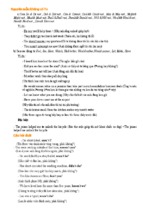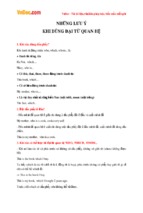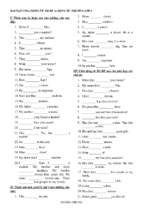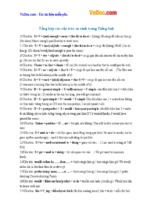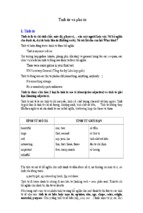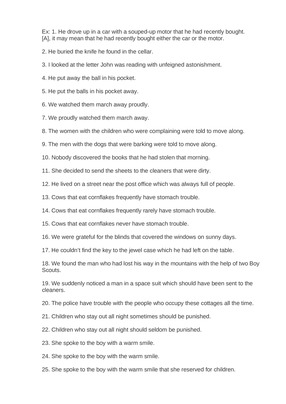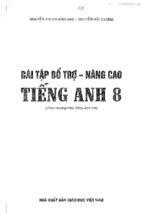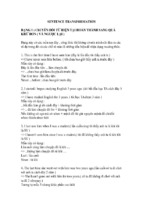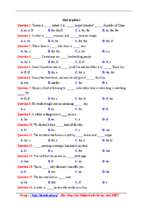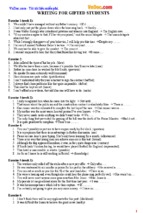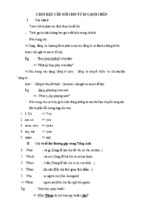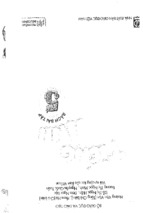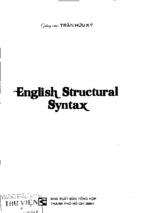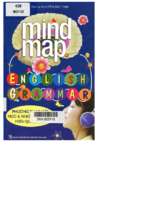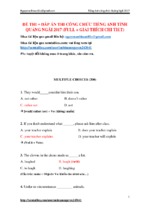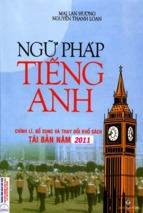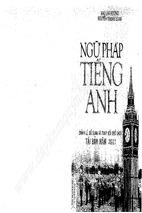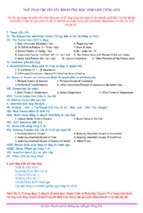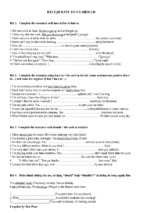ENGLISH VOCABULARY ELEMENTS
This page intentionally left blank
ENGLISH VOCABULARY ELEMENTS
Keith Denning
Brett Kessler
William R. Leben
Second edition
1
2007
3
Oxford University Press, Inc., publishes works that further
Oxford University’s objective of excellence
in research, scholarship, and education.
Oxford New York
Auckland Cape Town Dar es Salaam Hong Kong Karachi
Kuala Lumpur Madrid Melbourne Mexico City Nairobi
New Delhi Shanghai Taipei Toronto
With offices in
Argentina Austria Brazil Chile Czech Republic France Greece
Guatemala Hungary Italy Japan Poland Portugal Singapore
South Korea Switzerland Thailand Turkey Ukraine Vietnam
Copyright © 1995, 2007 by Oxford University Press, Inc.
Published by Oxford University Press, Inc.
198 Madison Avenue, New York, New York 10016
www.oup.com
Oxford is a registered trademark of Oxford University Press
All rights reserved. No part of this publication may be reproduced,
stored in a retrieval system, or transmitted, in any form or by any means,
electronic, mechanical, photocopying, recording, or otherwise,
without the prior permission of Oxford University Press.
Library of Congress Cataloging-in-Publication Data
Denning, Keith M.
English vocabulary elements / Keith Denning, Brett Kessler, William R. Leben.—2nd ed.
p. cm.
Includes bibliographical references and index.
ISBN-13 978-0-19-516802-0; 978-0-19-516803-7 (pbk.)
ISBN 0-19-516802-X; 0-19-516803-8 (pbk.)
1. Vocabulary. 2. English language—Grammar. I. Kessler, Brett, 1956– II. Leben,
William Ronald, 1943– III. Title.
PE1449.D424 2006
428.1—dc22
2006049863
1 3 5 7 9 8 6 4 2
Printed in the United States of America
on acid-free paper
Preface
Intended Audience for This Book
This book is intended for use in college-level courses dealing with English word
structure. It also aims to provide an introduction of how units of a language—
sounds, word elements, words—function together and how a language functions
in society over time. Part or all of the text may also be used to good effect in
English for Foreign Students and English as a Second Language (ESL) courses. It
is also recommended for those interested in preparing for educational aptitude
tests and other postsecondary admissions tests (including the PSAT, SAT, ACT,
GRE, LSAT, MCAT, and MAT) that test vocabulary skills. If this list seems broad,
it is because nearly every field of study or work requires a facility for comprehension or expression in the English language. The list is, of course, not meant to
exclude those who are merely afflicted with the kind of curiosity about language
that has motivated many an amateur and professional linguist in the course of
a lifetime of joyful pursuit.
The book’s first goal is to expand vocabulary skills by teaching the basic
units of learned, specialized, and scientific English vocabulary, but its reach
extends far beyond this. To make sense of current English word structure and
to build word analysis skills that will continue to prove useful, the book presents basic principles of word formation and word use and shows how these
have affected English since its beginnings. This in turn leads to further topics
including phonetics and the relationship of English to other Indo-European
languages. As a result, the book provides an introduction to some of the most
important concepts of modern linguistics by showing their role in the development of English vocabulary.
P R E FA C E
vi
Using This Book
Key concepts are shown in boldface when introduced (e.g., gloss and doublet).
Learning definitions of these terms is important, but a bigger goal is to gain an
idea of the role of these concepts in the overall system of language.
Lists of word elements to be memorized accompany most chapters. Following
them are a variety of exercises to choose from. Some help build familiarity with
word elements by putting them to use in words. Others apply principles from the
chapters to new cases. We hope these will encourage you to master the material
as it is encountered instead of saving memorization until the end.
Vocabulary-building Techniques
Students may find flashcards useful for memorizing word elements. Thanks to
Suzanne Kemmer, an excellent set is available on the Web at http://dacnet.rice
.edu/projects/ling215/FlashCards/.
A more low-tech method is to cover one side of the list of elements and glosses
and, going from top to bottom and then from bottom to top, to try to recall the
element for each gloss and then the gloss for each element. Other approaches
to the task of self-drilling for memorization include repeating word elements
and glosses to yourself until you cannot internally hear one without the other,
or finding a rhyme or mental picture that helps to associate elements with their
glosses (e.g., “aster reminds me of the flower having the same name, which looks
like a star,” or “viv reminds me of my friend Vivian, who is very lively”).
Using a Dictionary
As a companion to this text, we strongly recommend a bound dictionary designed for the collegiate level or above (i.e., one containing 150,000 or more
entries), such as The American Heritage Dictionary of the English Language1 or
Merriam-Webster’s Collegiate Dictionary.2 You may also find it useful to consult
1. Fourth ed. (Boston: Houghton Mifflin, 2000). Also accessible through http://bartleby.com/.
2. Eleventh ed. (Springfield, Mass.: Merriam-Webster, 2003). Also accessible at http://www.m-w.com/.
P R E FA C E
a larger dictionary like the Oxford English Dictionary (OED)3 or Webster’s Third
New International Dictionary, Unabridged4 or such specialized dictionaries as
Dorland’s Illustrated Medical Dictionary5 or Stedman’s Medical Dictionary.6
Using a dictionary effectively is a skill that must be learned. It is important
to become familiar with the basic layout of any dictionary you use. Most good
dictionaries make this task easier by presenting explanations of entries, lists
of abbreviations, and so forth, in the introductory pages. We recommend that
students take the time to read this material before trying to use a new dictionary,
thereby avoiding frustration later on.
Most dictionaries are also accessible online or in CD or DVD formats. These
are invaluable for many kinds of searches (e.g., finding all words that end in
-archy, or words whose definition contains the word government). We recommend these not as a substitute but as a supplement to a print version, if only
because printed pages permit a level of browsing that can’t yet be duplicated on
computer screens.
One of the best ways to attack the bewildering variety of English vocabulary
is to refer to a collegiate-level dictionary when you confront unfamiliar, difficult,
or interesting words. When you come across an unfamiliar word or element, it
is a good idea either to make a note of it for later reference or to take a moment
to look it up. Learning to look for and recognize the elements and words you
learn in the course (as well as those you acquire on your own) will eventually
minimize the time you will spend with a dictionary—unless, of course, you enjoy
reading dictionaries, in which case you may find yourself spending more time
on other words than on the one you originally meant to look up!
Moving beyond the Final Chapter
This book doesn’t contain one percent of what the authors find interesting about
English vocabulary. We will judge the text as successful if the groundwork laid
3. Second ed. (20 vols.; Oxford, Eng.: Oxford University Press, 1989; micrographic 1-vol. ed., 1991).
Three supplementary volumes have been published as well (1993–1997). All are incorporated in
the CD-ROM and in the online version at http://www.oed.com/.
4. Springfield, Mass.: Merriam-Webster, 1961. See also http://www.m-w.com/.
5. Thirtieth ed. (Philadelphia: Saunders, 2003).
6. Twenty-eighth ed. (Philadelphia: Lippincott Williams & Wilkins, 2005). Also accessible at http://
www.stedmans.com/.
vii
viii
P R E FA C E
here motivates readers to explore further and provides enough skills to undertake
such explorations.
More comprehensive lists of Latin and Greek word elements than those provided in the glossary can be found in the works listed at the end of this book.
These works list elements according to different principles, but the student can,
with a little searching, use them to find and identify many less frequently used
word elements not found in our glossary.
The World Wide Web is a rich source of lists of words and word elements.
One constantly growing resource we recommend is Professor Suzanne Kemmer’s
Rice University Neologisms Database, which contained some 5,500 entries at the
time this book was published: http://esa4.rice.edu/~ling215/.
We owe profound thanks to our students and teaching assistants over the years
for many helpful and insightful suggestions. The course that led to this book owes
its development to the textbook Structure of English Words, by Clarence Sloat
and Sharon Taylor,7 and to course materials prepared by Robert Stockwell, and
we are indebted to these sources for first showing the way. We are also grateful
to many colleagues for generous and helpful comments and corrections: to John
J. Ohala, J. David Placek, Robert Vago, and the late R. M. R. Hall, who offered
extensive suggestions for the first edition. Special thanks to Suzanne Kemmer,
Joan Maling, Joe Meyers, Nasreen Sarwar, and many students over the past eleven
years for corrections to the first edition. Thanks also to Daniel Leben-Wolf for
doing the art.
Tragically, Keith Denning, coauthor of the first edition, passed away suddenly
in 1998. We dedicate the second edition to his memory.
7. Fourth ed. (Dubuque, Iowa: Kendall/Hunt, 1996).
Contents
Symbols and Abbreviations
xi
ONE
The Wealth of English
3
T WO
The History of English and Sources
of English Vocabulary
19
Morphology: Analyzing Complex Words
41
Allomorphy
75
Phonetics
95
THREE
FOUR
FIVE
Regular Allomorphy; Numeric Elements
113
SEVEN
Polysemy and Semantic Change
137
EIGHT
Usage and Variation
157
Latin and Greek Morphology
173
The Prehistory of English and the Other
Indo-European Languages
189
Later Changes: From Latin to French
to English
207
A P P E N D I X ONE
Elements to Glosses
221
A P P E N D I X T WO
Glosses to Elements
249
Glossary
277
Further Reading and Research Tools
299
Index
305
SIX
NINE
TEN
ELEVEN
This page intentionally left blank
Symbols and Abbreviations
International Phonetic Alphabet
The following symbols are used in the text when a pronunciation must be described precisely. The boldface parts of the words beside each symbol illustrate
the sound; more precise definitions can be found in chapter 5, Phonetics. Unless otherwise noted, the keywords are to be given current standard American
pronunciations. The phonetic symbols used here are those of the International
Phonetic Association (IPA).1 When these symbols are used, they are enclosed
in slashes. For example, “the word bathe is pronounced /beð/” or “the sound /�/
occurs at the end of the word rouge.”
a
hock;2 also in ride /rad/, out /aυt/
ɒ
hawk2
æ
b
d
d�
ð
cat
boy
dog
badge
they
e
ə
made
elephant, cut
ε
pet
1. Further information about this phonetic alphabet is available in the Handbook of the International Phonetic Association (Cambridge University Press, 1999) and at http://www.arts.gla.
ac.uk/ipa/.
2. Many North Americans do not distinguish /a/ and /ɒ/ in their speech, so that hock and hawk
sound alike.
xi
S Y M B O L S A N D A B B R E V I AT I O N S
xii
f
�
fat
go
h
�
hot
cohere for some speakers: a breathy-voiced /h/
i
j
k
l
m
n
ŋ
machine
pit
hallelujah, yell
voiced palatal stop similar to /d�/, as in Sanskrit Jagannatha
kiss
left
mark
nice
sing
o
ɔ
p
r
s
ʃ
t
tʃ
u
υ
v
w
x
y
z
�
θ
rose
horse; also in joy /d�ɔ/
pot
run, irk
sit
ship
top
catch
prune
put
vote
worm
German Bach, Scottish loch, Hebrew Hanukkah (a raspy /k/)
French tu, German Übermensch (/i/ with rounded lips)
zoo
pleasure
thigh
In addition to these symbols based on letters, we also use the following characters:
�
Precedes a fully stressed syllable: “record is pronounced /'rEkrµd/
�
Precedes a syllable that has secondary stress: “taxicab
/'t{ksi"k{b/.”
when a noun and /rI'kOrd/ when a verb.”
S Y M B O L S A N D A B B R E V I AT I O N S
�
Follows a long sound. For American English the mark is not
necessary, but the contrast between short and long sounds is
important for many other languages: “Latin /'akEr/ ‘maple’ vs.
/'a:kEr/ ‘sharp’.”
�r
A vertical stroke under a consonant means that it forms the core
of a syllable instead of a vowel: “butter /'b@trµ/, apple /'{plµ /.”
Modified Orthography
When the precision of the IPA is not required, it is often more convenient to
indicate certain aspects of the pronunciation of a word by adding diacritics to the
standard spelling, or orthography, of the word. For example, if we wish to note
which syllable is stressed in the word orthography, we can write “orthógraphy”
rather than “ /"Or'Tagr@fi/.” The diacritics used in orthography
are:
´
`
¯
˘
Placed above a vowel that has primary stress: “infláte”
Placed above a vowel that has secondary stress: “táxicàb”
Placed over a long vowel: “Latin acer ‘sharp’ ”
Placed over a short vowel: “Latin a¨cer ‘maple’ ”
Abbreviations
adv.
cf.
G
L
lit.
ME
adjective
adverb
compare (Latin confer)
Greek
Latin
literally
Middle English
ModE
Modern English
N
noun
OE
Old English
PREP
preposition
A
xiii
S Y M B O L S A N D A B B R E V I AT I O N S
xiv
SI
International System of Units
V
verb
Typographical Conventions
Typefaces
italics
bold
caps
When words are cited (talked about rather than used
functionally), they are set in italics. The same applies to word
elements and phrases: “It depends on what the meaning of is
is”; “The word prefix begins with the prefix pre-.”
Boldface is used to draw the reader’s attention to a specific
word or element: “epi- means ‘additional’ in words like
epithet ‘nickname’.
Small capitals are used for words and abbreviations
describing parts of speech: “récord n has a different stress
from recórd v.”
Punctuation and Other Symbols
In addition to regular double quotes “. . .” which have their everyday meaning, the
book uses the following types of quote marks for specific linguistic purposes:
<. . .>
/. . ./
When the discussion deals specifically with spelling, letters
are enclosed in angled brackets: “the letter .”
Pronunciation may be indicated by placing phonetic symbols
between slash marks: “/tIr/ and /tEr/ are both spelled .”
‘. . .’
If meaning (rather than sound or spelling) is the focus, a
word or phrase appears within single quotes: “Greek cosmos
‘universe’.”
×. . .
The mark × before a word means that it is ungrammatical:
“the past tense of write is not ×writed.”
*. . .
The mark * before a word or element means that it is
unattested, but we have reason to believe it existed: “The
S Y M B O L S A N D A B B R E V I AT I O N S
word chief must come from a popular Latin word *capum,
not the classical Latin caput.”
Other special symbols include the following:
XX
Y→X
X~Y
∅
X-
-X
X-Y
(. . .)
/
__
X descended from Y: “oak < OE ac.”
Y developed into X: “ac > oak.”
X developed from Y by some morphological or analogical
process: “Irregular English plurals include ox → oxen and
goose → geese.”
X and Y are variants: “The past tense of dive is dived~dove.”
Zero, the absence of a sound or letter: “The plural of deer is
formed by adding ∅.”
More material must be added at the end of X to make a
complete word. Prefixes and stems are cited with a trailing
hyphen: “pre-”, “writt-.”
X is a suffix: “-ism.”
A hyphen inside a word separates morphs: “There are three
meaningful components in the word black-bird-s.”
When part of a word or morph is in parentheses, that part
is optional: “The morpheme cur(r) appears in recur and
recurrent.”
In a phonological rule, / separates the statement of the
change from the description of the environment in which it
takes place.
In the environment of a phonological rule, __ stands for
the sound under discussion: “n → m / __ p” means that /n/
becomes /m/ before a /p/.
xv
This page intentionally left blank
ENGLISH VOCABULARY ELEMENTS
This page intentionally left blank
CHAPTER ONE
The Wealth of English
Word Power and a World Power
In the number of speakers who learn it as a first or second language, and in its
range of uses and adaptability to general and specific tasks, English is the world’s
most important language today. It is the mother tongue of several hundred
million people. Its rich verbal art, great works in science and scholarship, and
major role in international commerce and culture have made English the most
frequently taught second language in the world.
English is not the first language of as many individuals as Mandarin Chinese.
But it is spoken over a much vaster area. In North America, Europe, Asia, Africa,
and elsewhere, it is the official language of many nations, including some where
English is not most people’s first language.
A history of political importance as well as a certain linguistic suppleness have
endowed English with an enormous vocabulary. Webster’s Third New International Dictionary contains 476,000 words, and these do not include the many
technical terms that appear only in specialized dictionaries for particular fields,
or recent neologisms, not to mention all the regular plural forms of nouns, the
different present and past tense forms of verbs, and other words derived from
these words. No other language comes close to English in a count of general
vocabulary. German runs a distant second with under 200,000 words. According
to Robert Claiborne,1 the largest dictionary of French has about 150,000 words,
and a Russian dictionary maybe 130,000.
1. Our Marvelous Native Tongue: The Life and Times of the English Language (New York: Three Rivers
Press, 1987).
3
- Xem thêm -

